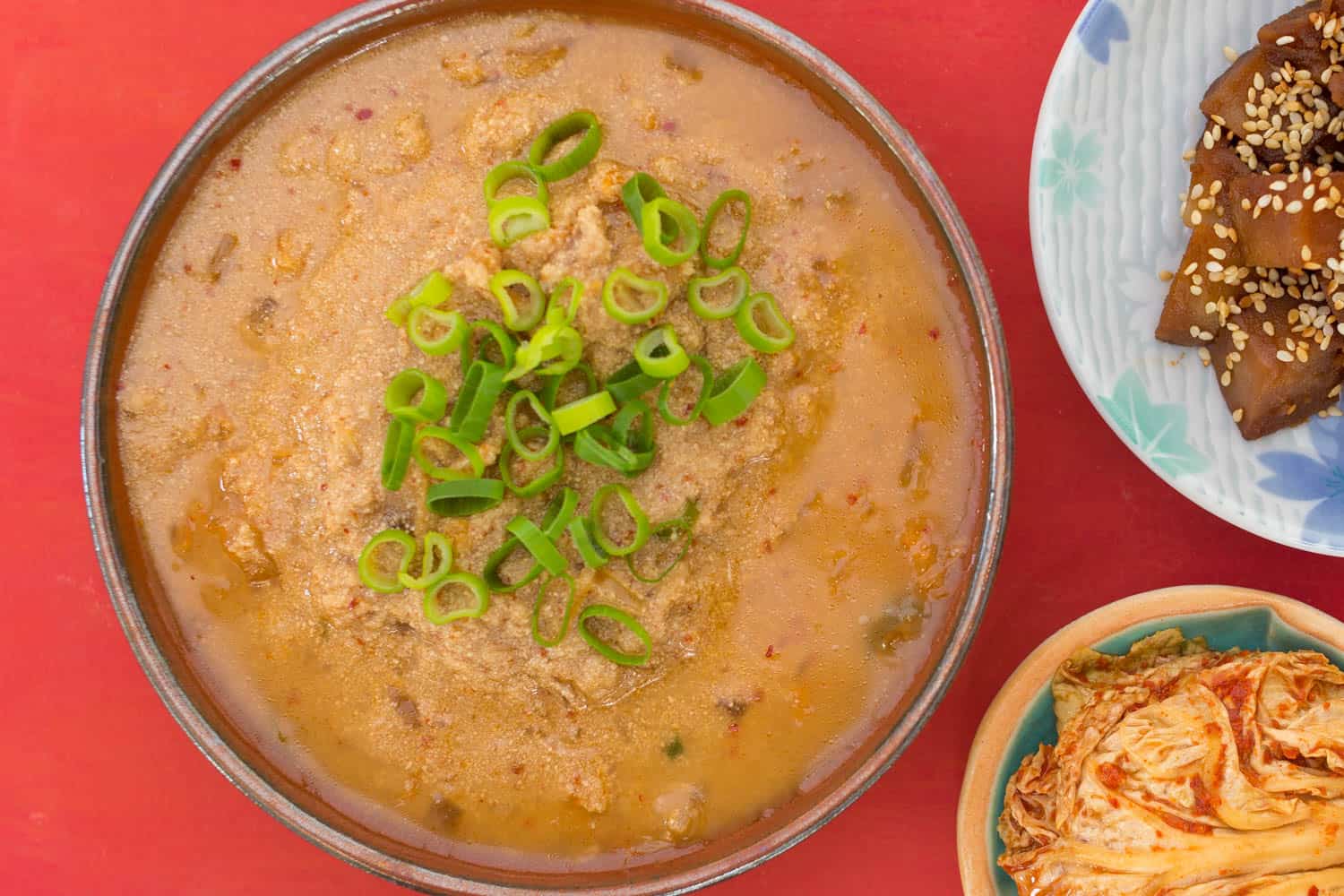A destination long on my want list, I was unprepared for the briskness of my first evening in Seoul last Autumn after touching down on a flight from Phuket. For dinner I ventured, shivering, to Ose Gye Hyang.
I sometimes go on complaint binges about the averageness of most meals I eat dining out. Not that they are poor, but that the food just doesn't blow me away. In this world framed through the lens of what is and isn't Instagram-worthy, we forget though most foods we consume are of the ordinary, middle ground variety. That applies whether we consume them at home or at a restaurant. What's more, I now realise I don't want every meal to knock my socks off because if they did I wouldn't get to enjoy those culinary a-ha moments as much as I do.
My dinner of kongbiji jjigae, or okara stew, at Ose Gye Hyang was such a moment. I already knew what I would order because I had already viewed the menu online, but a combination of waiting for a table in the cold, being cold, and not understanding why cold must exist at all resulted in a change of mind. I craved a bubbling pot of stew, so I ordered the one called biji. It wasn't until my first bite that I realised biji is okara. Nutty and creamy, this vegan okara stew is made for anyone who savours the flavor of soy.
Kongbiji jjigae serves a dual purpose in my kitchen. That is, this stew employs two excellent leftovers that are often regrettably overlooked: really old kimchi and soy bean pulp leftover from making soy milk and tofu.
Here in the UK the coldest season may be facing its curtain call, but this winter warmer recipe will remain in my repertoire throughout the year. This is logical in a country where few summers pass without the need for central heating.
Vegan Korean Okara Stew
Kongbiji Jjiggae
Made with a mashed purée of nutty, creamy soy bean pulp, this okara recipe is also a fabulous way to use up any old kimchi taking residency at back of your fridge. This is the stuff that has gone beyond its fizzy youthfulness right to aged funk.
Ingredients
- 2 teaspoons sesame oil
- ½ cup roughly chopped onion
- 2 teaspoons minced garlic
- 1 teaspoon minced ginger
- 125 grams aged kimchi, chopped
- 2 tablespoons Korean soup soy sauce
- 1 tablespoon sake
- 2 teaspoons gochugaru (Korean chilli powder)
- 2 ½ cups dashi
- 300 grams (2 cups) fresh okara
- Salt, to taste
- A handful sliced spring onion
Directions/Method
- Add the sesame oil to a medium saucepan. Turn the heat to medium and add the onion, garlic, and ginger, frying for 1 minute until fragrant.
- Add the kimchi, soy sauce, sake, and chilli powder. Fry for 5 minutes.
- Add stock and okara. Cook for 15 minutes. Season with salt to taste.
- Serve topped with spring onions.
- Makes: 3-4 servings
- Cuisine: Korean
